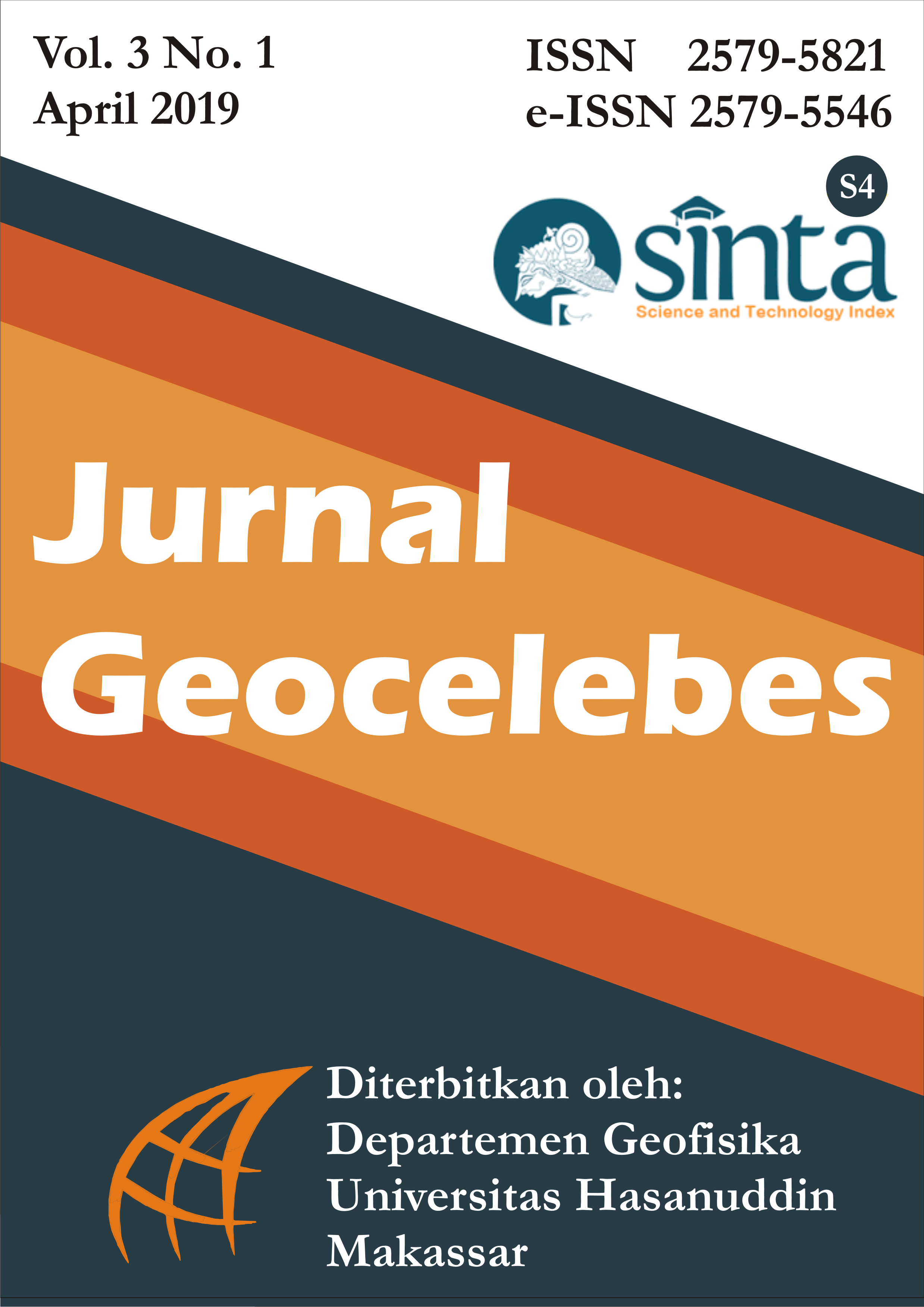IDENTIFIKASI KEKAR DESA PATTONTONGAN KECAMATAN MANDAI KABUPATEN MAROS, SULAWESI SELATAN
DOI:
https://doi.org/10.20956/geocelebes.v3i1.6052Abstract
Pelaksanaan kegiatan survey telah dilakukan di sekitar daerah pertambangan di Desa Patontongan, Kecamatan Mandai, Kabupaten Maros, Sulawesi Selatan. Pada penelitian ini, pengukuran dilakukan berulang kali dengan menggunakan alat yaitu kompas geologi. Hasil pengukuran di lapangan diperoleh beberapa nilai strike-dip pada lokasi struktur kekar yang berbeda, sehingga pada daerah tersebut mengiindikasikan terdapat kekar. Data strike-dip yang diperoleh kemudian diolah menggunakan software DIPS untuk menghasilkan Diagram Rosette. DIPS digunakan untuk melakukan analisis orientasi data geologi dan juga berhubungan dengan analisis teknik struktur batuan. Hasil Diagram Rosette memperlihatkan bahwa arah jurus kekar yang terdapat di Desa Patontongan ini mengarah hampir Utara-Selatan serta berarah Timur Laut-Barat Daya. Dengan melihat Diagram Rosette maka dapat disimpulkan gaya pembentuk struktur pada lokasi tersebut berarah Barat-Laut Tenggara.References
Pranata, Mohammad Bagus. 2016. Petrogenesis Batuan Beku dan Karakteristik Kekar Tiang di Bukit Pajangan, Desa Sidomulyo, Kecamatan Purworejo, Kabupaten Purworejo, Jawa Tengah. Departemen Teknik Geologi Universitas Diponegoro. Vol.1 No.2, page:41-49.Dinas Tenaga Kerja Kota Makassar. 2003. Profil Kabupaten/Kota Makassar Sulawesi Selatan. Makassar: Dinas Tenaga Kerja Kota Makassar.
Sompotan, Armstrong. 2012. Struktur Geologi Sulawesi. Institut Teknologi Bandung. Bandung.
DeGraff, James. 1987. Surface morphology of columnar joints and its significance to mechanics and direction of joint growth. Department of Earth and Atmospheric Sciences. Vol.99 No.16, page:605-617.
Downloads
Published
How to Cite
Issue
Section
License
Authors who publish with this journal agree to the following terms:
- Authors retain copyright and grant the journal right of first publication with the work simultaneously licensed under a Creative Commons Attribution License that allows others to share the work with an acknowledgement of the work's authorship and initial publication in this journal.
- Authors are able to enter into separate, additional contractual arrangements for the non-exclusive distribution of the journal's published version of the work (e.g., post it to an institutional repository or publish it in a book), with an acknowledgement of its initial publication in this journal.
- Authors are permitted and encouraged to post their work online (e.g., in institutional repositories or on their website) prior to and during the submission process, as it can lead to productive exchanges, as well as earlier and greater citation of published work (See The Effect of Open Access).





